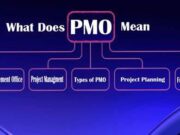In today’s digital world, coding, and computational thinking are becoming fundamental skills alongside reading and writing. Educators face the challenge of effectively integrating these skills into the curriculum, ensuring students understand how to code and apply logical thinking to solve problems.
This article outlines the top strategies for teaching these vital skills in schools, aiming to create a robust environment for learning and innovation.
1. Start with the Basics Using Visual Programming Languages
Introducing young learners to coding through visual programming languages like Scratch or Blockly can significantly ease learning. These platforms use drag-and-drop blocks to represent code concepts, making abstract ideas more concrete and less intimidating for beginners.
- Engage with fun, interactive tools that stimulate interest and excitement.
- Use story-based tutorials to relate coding problems to real-world scenarios.
- Encourage collaboration on projects to enhance problem-solving skills.
- Provide immediate feedback through the software to keep students motivated.
Starting with these languages helps students grasp fundamental concepts before progressing to more complex programming languages, building a solid foundation for further learning.
Incorporating support from writing services into the curriculum can be particularly beneficial for teaching coding and computational thinking in schools. These services can assist students in developing clear and precise documentation for their coding projects and many other assignments.
If you wonder, “Who can write papers for me?” expert authors from a reliable platform can help draft accurate project proposals, write detailed reports, and create user guides for software. By partnering with a high-quality writing service, educators can provide students with the necessary support to excel in coding and effective communication, ensuring they are better prepared for future challenges in tech-oriented fields.
2. Incorporate Coding Across Different Subjects
Coding should be integrated into the computer science curriculum to embed computational thinking. Instead, it can be integrated across various subjects to demonstrate its wide-ranging applications.
- Apply coding to math to teach algorithms and problem-solving.
- Use coding in science experiments to gather and analyze data.
- Incorporate it into humanities to simulate historical events or create digital art.
- Utilize coding in physical education to calculate scores or predict outcomes.
This interdisciplinary approach enriches students’ learning experience and illustrates the relevance of coding in multiple contexts, enhancing their engagement and understanding.
3. Focus on Problem-Solving Techniques
Computational thinking is all about problem-solving, and teaching it effectively involves focusing on strategies that break down complex problems into manageable parts.
- Teach students to decompose problems into smaller, more manageable components.
- Encourage pattern recognition to identify similarities and differences that guide solution strategies.
- Focus on abstraction by removing unnecessary details and focusing on the relevant ones.
- Develop algorithms by creating step-by-step solutions to problems.
These problem-solving techniques are critical for students to understand and apply computational thinking across all aspects of their education and daily lives.
4. Use Project-Based Learning
Project-based learning is an excellent strategy for teaching coding because it allows students to apply what they’ve learned in a real-world context. By working on comprehensive projects, students can develop their coding skills and ability to cooperate and see projects through to completion.
- Assign projects that solve real problems to make learning relevant.
- Encourage teamwork to develop communication and collaborative skills.
- Incorporate peer reviews to enhance understanding through teaching.
- Use projects to integrate knowledge from various subjects.
This approach helps students understand the practical applications of coding and computational thinking, motivating them with the tangible outcomes of their efforts.
5. Regularly Update Curriculum Content
The technology landscape is rapidly evolving, and so should the technology education curriculum. Keeping the content up-to-date is crucial in teaching coding and computational thinking.
- Stay updated with the latest programming languages and tools.
- Incorporate recent case studies and technological advancements.
- Attend professional development workshops to keep skills current.
- Solicit feedback from students on what works and what needs improvement.
Educators can provide the most relevant and compelling learning experiences by continuously updating educational content and preparing students for success in an increasingly digital world.
Summing Up
Implementing these strategies can make learning to code an engaging, comprehensive, and invaluable part of a student’s education. As coding becomes an essential skill in the job market, these approaches ensure that students are proficient coders and innovative thinkers capable of solving complex problems.



















